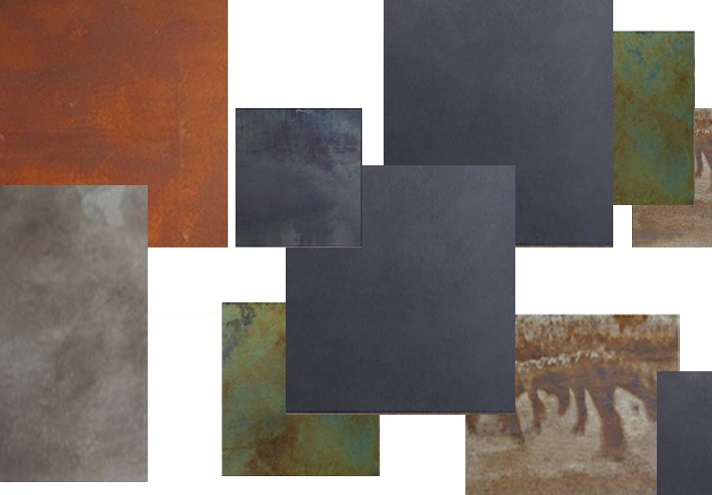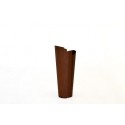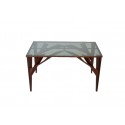Brutalist style and luxury in the 70s in the brand new hotel "The Standard" in London. |
|
The brand new 5-star hotel has opened in recent days following a splendid inauguration open to journalists, bloggers and designers, in Kings cross, exactly opposite the landmark of San Pancras station. |
|
The hotel was designed by the Shawn Hausman Design, to celebrate the brutalist architecture of Camden Town where it is located. Overall, "The Standard" in London will have 266 rooms, some of which are much more luxurious than others, with outdoor terraces, hot tubs and the inevitable rooftop bar accessible also to non-guests of the hotel. One of the highlights of the new 5-star dream is certainly represented by the ground floor, where the hall welcomes customers in a warm and cozy environment which blinks the eye to 70s. It’s been a long time since there’s started to talk about the shift from the preference of simple and minimalist designs to full, warmer and even more chaotic styles, which are perfectly identified in the vintage period. BRUTALIST ART BIG INFLUENCE IN THE STANDARD HOTEL ARCHITECTURE Brutalist art, in one of the many loops of art and human culture in general, began spreading in the 1960s reaching its peak at the end of the following decade. This represents an architectural period, recently taken up by many architectural studios, characterized by large grey works, defined in this way thanks to the massive use of concrete that distinguishes them. Rockfeller center in New York represents one of the most famous examples in the world of constructions made following this age.
The Royal Institute of British Architects defined this age, a type of raw, incomplete, architecture, with great emphasis on the materials used, textures and construction methods, producing highly expressive forms with a strong character. One of the greatest art collectors of the 20th century that many do not know how to be Lenny Kravitz, defined the work of one of the greatest modern brutalist artists, Paul Evans, extraordinarily excelled, extraordinarily ugly, extraordinarily tacky and extraordinarily sophisticated. It’s within those contrasts, perfectly balanced in interiors such as the one below that made him, one of the biggest names in the panorama.
Let's see together what are the main features of the brutalist architecture and how they were applied in the construction of the new standard hotel in London. Concrete & Metals
Anyone who follows trends of the design world is certainly aware of the resurrection, in recent times, of cement (or the cement effect). The material was used for everything, from the bases for uprights to walls and bathtubs or tables. Most large-scale walls or floors are in concrete blocks that always maintain a level of finish that maintains a certain state of rusticity, so that it is attractive to users. Together with cement, metals are a key element in brutalist architecture. Chosen for their simplicity and for the perception of force they transmit, as is the case with concrete, metal helps give brutalist interiors a strong aesthetic connotation of industrial style.
Typical of these interiors are the furnishings in metals by the sculptural character, like angolar planters and artistic objects and sculptural walls. Geometric edges and spikes The jagged edges and tips are the perfect counterpart to the extensive linear surfaces of concrete and metal. These jagged edges are sometimes caused by the designer's chosen techniques to balance the aesthetic performance of his works. Collage-style techniques have also been used, which recall the cubist tendencies and destructive aesthetics that we could find within a work of Picasso, such as Guernica. Patinated and burnished finishes The thin layer of patina that develops on the material, in particular metal and stone, as a result of oxidation and the action of time through time. The glossy finishes give the brutalist interiors a less refined image with industrial style textures.
The burnished style ised ny brutalist designers realises forms by patterns of slick and smooth feelings, almost olily or realises stained fantasies like décor elements, like coatings of walls, solai and furnishings.
Bold color combinations The brutalism of this hotel, influenced by the architectural current seen as the overcoming of the Modern Movement in architecture, employs the sturdiness of exposed concrete whose shapes highlight the expressive strength of the structure. The extravagance of the geometries and the colors in contrast with the rough and industrial lines of some furnishings, combine with an environment characterized by the typical style of the 70s.
Retro time, this is what the 70's style furniture is called. An era of contrasts between bright colors, technological innovations and new age from flower children, recalling the hippie movement of the time. The '70s decor is nonconformist characterized by equitable lines and free from any concept. The shape of the furniture varied throughout the decade. Many were influenced by the minimalist style, characterized by clean forms, in Scandinavian style, while others, especially towards the end of the 70s, tended to stuff themselves more and more. We leave out this last trend, definitely outdated, and let's focus on linear furnishings, more suited to modern taste and less demanding. In addition to teak and pine, a ubiquitous wood in the 1970s, the interesting materials were and are undoubtedly: glass and chrome surfaces, accompanied by the classic and timeless brass, now ready to return to the scene with current home decor trends. |
Articoli Correlati
- Acciaio e architettura industriale: efficienza, estetica e innovazione firmate TrackDesign
- Arredo terrazza, le tendenze 2025: mobili da esterno belli come quelli di casa
- Detrazioni Fiscali 2025 per Pergole e Pensiline Fotovoltaiche: Guida Completa
- Microliving in metallo: quando pochi metri quadrati diventano una scelta di design, sostenibilità e ingegno progettuale
- Bjarke Ingels e la concezione di metallo
 Italiano
Italiano English
English Français
Français Deutsch
Deutsch














